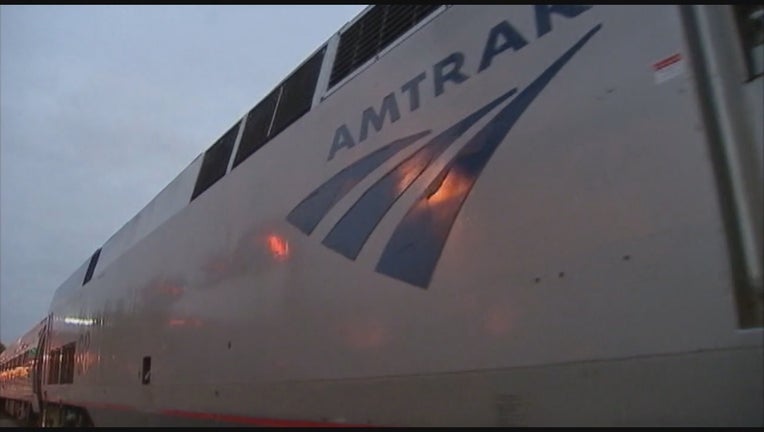Grant awarded to start new round-trip train service between Twin Cities and Milwaukee

An Amtrak train at a station.
ST. PAUL, Minn. (FOX 9) - For a major metropolitan area that was built by the railroads, the days of dozens of daily locomotives carrying thousands of passenger, are simply black and white memories. Now, only Amtrak’s Empire Builder stops through the Twin Cities, but efforts are underway to expand passenger rail service out of Union Depot in St. Paul.
Wednesday, the U.S. Transportation Secretary announced a grant for new round-trip service between the Twin Cities and Milwaukee.

Grant awarded to start new round-trip train service between Twin Cities and Milwaukee
Wednesday, the U.S. Transportation Secretary announced a grant for new round-trip service between the Twin Cities and Milwaukee.
“And right now the Twin Cities are only served by Amtrak long distance Empire Builder route, so this gives passengers a choice, some additional options,” said U.S. Transportation Secretary Elaine Chao.
The $31 million grant to the Wisconsin Department of Transportation will pay for rail improvements to support an addition daily round trip train. The route will run on existing Amtrak lines. Planners expect up 157,000 passengers a year will ride the new train when it starts sometime in 2024. Leaders hope the change will make the route more reliable for passengers.
“Amtrak has got these long standing complaints, which is why today’s investment is hopefully going to help a great deal in terms of passenger experience, passenger efficiency, rail efficiency and also add to the economic development of this region,” said Chao.
On Wednesday an Amtrak train struck and killed a pedestrian on the tracks in Fridley, Minnesota. An Amtrak spokesman says the man was trespassing on railroad property, but the incident underscores rail safety. In addition to announcing the new Twin Cities rail service, the Department of Transportation is also rolling out a renewed campaign to warn about the dangers of railroad crossings.
“And so we want to tell people that a train takes about a mile to stop, so you can never outrun the train,” said Chao.
There is no start date yet for the new Amtrak service to Milwaukee in 2024, but the Minnesota Department of Transportation will be contributing 19 percent of the costs for the route.

